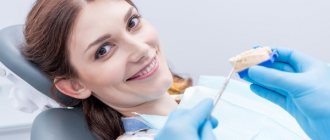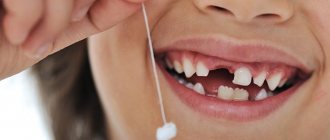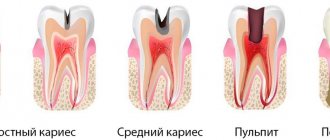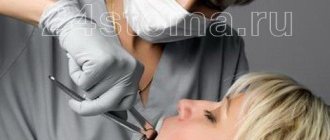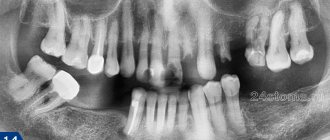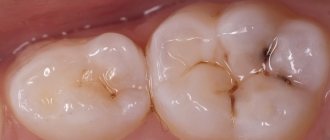Why are breastfeeding women afraid to have their teeth treated?
Any step of a nursing mother can affect the health of the child, so before performing the simplest usual actions, she evaluates whether this will harm the baby. When visiting a dentist, three things may cause concern:
- To make a diagnosis, you may need an x-ray of the diseased tooth;
- During treatment, filling materials and anesthesia medications are used;
- After the procedure, a course of antibiotics may be prescribed.
A young mother may fear that x-rays and medications will make breast milk unsuitable for feeding, and just in case, she may completely refuse dental treatment and postpone going to the doctor until the time when the baby is weaned.
How to avoid darkening of teeth
Once you achieve snow-white results in your tooth enamel, you need to try to maintain the whiteness. To do this, carefully monitor your diet, use special whitening pastes, herbal ones are especially suitable. The use of the following products should be limited:
- Dark-colored soft drinks and carbonated drinks;
- Black tea and coffee;
- Blueberries and blackberries;
- Chocolate and chocolate candies;
- Citrus fruit;
- Tomato sauce;
- Some medications;
- Chewing tobacco and cigarettes.
To maintain white enamel and healthy gums, brush your teeth at least twice a day for two to four minutes. Rinse your mouth regularly and use dental floss. Proper care removes plaque in a timely manner and prevents the formation of stains on tooth enamel.
Is it possible to treat teeth during breastfeeding?
If we compare the potential threat from medications used in dental treatment and from pathogenic bacteria in the carious cavity of the tooth, then the latter are much more dangerous for the child. Remember how many times a day a mother kisses her baby, not to mention the fact that she can taste food or drink from baby dishes to make sure they are at normal temperature? The infection will get to the child one way or another. Therefore, treating the teeth of a nursing mother is not only possible, but also absolutely necessary. You just need to warn your doctor about your situation.
If you go to the dentist at the first signs of caries, you can get by with minimal manipulations that do not require x-rays, anesthesia, or antibiotics. In this case, you don’t have to worry at all that dental treatment will somehow affect breast milk, and feed the baby immediately upon returning from the doctor.
X-rays during breastfeeding are also not contraindicated: short-term exposure to X-rays when photographing a diseased tooth will not make milk radioactive and will not harm the baby through breast milk. Moreover, filling materials will not penetrate into the blood and cannot pass into breast milk. And if there is a need for antibiotics, you can choose a medicine that is compatible with breastfeeding.
Causes of caries and its prevention in infants
Heredity plays an important role in the occurrence of caries in children. Yes, about sixteen genes have been found that are responsible for the development of caries. In families with such a genetic predisposition to caries, children should be shown to the dentist every six months from the moment the first teeth appear.
What is the prevention of caries in infants?
Do not introduce complementary foods until your baby shows signs of readiness for them. According to WHO recommendations, no earlier than six months. Regular monitoring of a woman during pregnancy and improvement of maternal nutrition reduces the likelihood of caries in children.
Do not eat with your child, please, with one spoon, do not give it to him from your mouth. The child should have an individual toothbrush. Even if you use pacifiers or pacifiers, although the World Health Organization does not recommend them, then at least do not lick them so as not to transfer Streptococcus mutans to your child. Oral hygiene plays an important role in preventing tooth decay.
Parents who regularly brush their own teeth set a good example for their children and reduce the amount of bacteria in their mouths, thereby reducing the likelihood of transmitting Streptococcus mutans caries to their baby. Brush your baby's teeth as soon as the first teeth appear, especially after he has eaten or drunk anything other than breast milk or water.
Try to prepare nutritious, varied complementary foods from whole, unrefined foods. If you give your child refined sweets, choose ones that are minimally in the mouth and brush the teeth after that. At night, breastfeed your baby, but not with sweet compotes or formulas. Children after six months can be offered water to drink to prevent dry mouth, but preferably not drinks with sugar.
Modern trips to the dentist allow you to get used to the environment of the dental office from early childhood, prevent caries in a timely manner or cure it at an early stage.
Does formula cause more tooth decay than mother's milk?
Many studies have been devoted to this, for example, Erickson in his studies compared the effect of artificial breast milk substitutes, the so-called formulas, and breast milk, mother's milk on caries in children. Research has found significant differences between human milk and most formulas.
First, it was found that breast milk has little effect on the acid-base balance in the mouth, while almost all brands of formula make the environment in the oral cavity more acidic, and the streptococcal bacterium, which is blamed for the destructive effect on teeth , reproduces best in an acidic environment.
Secondly, most formulas promoted active growth of bacteria, and in breast milk this growth occurred much more slowly.
Thirdly, it turned out that breast milk strengthens and remyelizes enamel, as it supplies the teeth with calcium and phosphorus. Most of the mixtures tested in the study did not strengthen tooth enamel at all.
The researchers also concluded that mother's milk does not lead to tooth decay if there is no other source of carbohydrates that bacteria use to reproduce.
Breast milk is in the mouth during the sucking process for a fairly short period of time. When a baby suckles properly, the nipple is deep in the baby's mouth and milk is practically squirted into the baby's neck. If the baby drinks formula, juice, or sweet liquid, it washes the teeth for a long time and negatively affects them.
Anesthesia for dental treatment during breastfeeding. How not to harm a child?
As for anesthesia, there is also no need to endure pain during the procedure.
If the doctor is warned that you are breastfeeding, he will select a drug compatible with breastfeeding. Breastfeeding women should not use painkillers containing adrenaline. Old-generation anesthetics - novocaine, lidocaine, which are practically not used in modern dental practice, can penetrate into breast milk in small quantities.
It is important!
Modern drugs, for example, ultracaine, articaine, are not contraindicated during breastfeeding if used in recommended doses.
Before treatment, check with your doctor what kind of drug he is going to give you, and whether the drug is compatible with breastfeeding.
How to whiten teeth at home
When using these methods, it is important that the mother and baby are not allergic to any component. The most common remedy is soda. This is a strong and gentle natural bleach. Mix a quarter teaspoon of baking soda with water and brush your teeth with the mixture.
Apples and strawberries can whiten enamel naturally. But it is important only to eat strawberries and not leave pieces of the berry on the enamel and gums. With prolonged exposure, the acid in strawberries can damage tooth enamel. In addition, you should be careful when eating this berry during lactation, as it is a fairly allergenic product. You can find a complete list of allergenic foods here.
Dentists recommend periodically rinsing your mouth with salted water. To do this, stir a teaspoon of salt in a glass of warm boiled water. Wait until it cools down and rinse your mouth. Salt water cares for gums, relieves inflammation and kills harmful microbes. In addition, it gradually whitens the enamel.
A mixture of bay leaf and orange peel is another affordable way to whiten enamel. To prepare the product, use a few pieces of orange peel and one bay leaf. Grind the crust, grind the leaf to a powder and mix the ingredients. Rub the mixture onto your teeth and leave for five minutes, then rinse your mouth with warm water. Repeat the procedure once a week.
You can use banana peels in a similar way. Take a small piece of banana peel and rub it on your teeth. Leave the mixture on for two to three minutes and rinse your mouth with warm water. This cleaning is done twice a week.
Do I need to express milk after anesthesia?
If the medicine used for pain relief is compatible with breastfeeding, then there is no need to express. If the dose of the drug has been increased or the instructions prescribe using it with caution during breastfeeding, then it is better to express the milk after anesthesia. Your doctor can give you advice on this matter, taking into account the type of anesthesia you were given.
So
- Breastfeeding women are afraid to have their teeth treated because, in their opinion, drugs or x-rays may penetrate into the milk. radiation from x-rays.
- In fact, nursing mothers’ teeth must be treated, since infection from diseased teeth will harm the child more than modern medications compatible with breastfeeding.
- In order not to harm the baby when using anesthesia, you need to tell the doctor that you are breastfeeding, and he will select anesthetics that are not contraindicated during breastfeeding.
- After anesthesia, you need to express only if the dose of the drug was increased, if medications containing adrenaline or outdated painkillers were used.
(0 ratings; article rating 0)
Share Share Share
Features of teeth whitening in dentistry
Teeth whitening in dentistry is carried out using special preparations to mineralize the enamel. This is a highly concentrated gel and catalyst. The procedure lasts 1.5-2 hours and helps remove dyes from the organic matrix of the tooth. This effect lasts from six months to several years.
After an in-office procedure, side effects may occur such as increased sensitivity and inflammation of the gums, destruction of enamel, toothache, and inflammation of the tongue. Bleaching is contraindicated for pregnant and lactating women, with damaged enamel and if you are allergic to the bleaching agents used. In addition, it is not useful for crowns, fillings, implants and veneers. To whiten such teeth, replacement with new ones is required.
Teeth whitening cannot be done during lactation, since the nursing mother’s body is weakened. The rehabilitation period becomes more complicated and takes a very long time; during the process, there is an insufficient supply of calcium ions to the tooth enamel. This causes serious complications and tooth decay.
The dangers of diarrhea while breastfeeding
Diarrhea is more dangerous for the mother than for the baby
Often mothers think that the main danger of diarrhea is the risk of infection of the child and interruption of breastfeeding. But modern medicine adheres to the point of view that diarrhea poses a greater danger to the mother than to the child, and breastfeeding can be done even with an intestinal infection. Infections are transmitted through unwashed hands, and not through milk, and food poisoning does not need to interrupt breastfeeding for the reason that, along with a small dose of toxins, the child also receives the mother's antibodies to the infection.
In case of a viral infection and a significant deterioration in the mother’s condition, the doctor may advise stopping breastfeeding for a short time, but there is no need to completely switch the baby to formula. Diarrhea is more dangerous for the mother, because she always needs to have strength to take care of the child. If mom suffers from diarrhea, eats poorly, sleeps poorly and is stressed, her milk supply may decrease. The most dangerous consequence of diarrhea is dehydration. The body loses water, vitamins and microelements that it needs for normal functioning.
With infrequent and mild diarrhea, the harm caused to the body is small, but with chronic and severe diarrhea, you need to sound the alarm, consult a doctor and get treatment. It is very important to stop fluid loss. If the body loses 10% of water, quite serious disorders begin, severe exhaustion, weakness, lethargy. When 25% of water is lost, death occurs.
Bloody diarrhea is very dangerous. He requires immediate hospitalization. The so-called “black stool” mixed with blood is a sure sign of intestinal bleeding. Under no circumstances should you try to stop it yourself; you cannot do without medical help.
Severe and prolonged diarrhea (more than 3 days) can lead to shock. Symptoms of shock include cold sweat all over the body, dizziness, rapid pulse, and severe weakness. In this case, you also need to call an ambulance.
Benefits of Air Flow Teeth Brushing
Modern dentistry offers a large selection of techniques for cleaning tooth enamel. Each technology has its pros and cons.
Air flow has the following advantages over ultrasonic teeth cleaning and other methods:
- cleaning hard-to-reach areas;
- antiseptic effect;
- elimination of unpleasant odor from the mouth;
- painlessness of the procedure;
- no exposure to chemicals;
- exclusion of an allergic reaction;
- The duration of the procedure is no more than 30 minutes;
- possibility of carrying out on sensitive enamel;
- achieving the effect of lightening the enamel.
The undoubted advantages of Air Flow also include the cost of teeth cleaning. The price of the procedure is significantly lower than for hardware methods.
How does the procedure work?
Teeth cleaning at the Dr. Martin clinic is performed with modern equipment using only safe techniques. Air Flow can be used to remove simple plaque and tartar in children and adults, since the gentle method of action does not damage even sensitive tooth enamel.
The procedure is carried out by highly qualified specialists according to the following scheme:
- to protect the eyes from soda crystals, the patient and doctor wear safety glasses;
- A saliva ejector is installed in the oral cavity;
- the doctor, using a nozzle, directs a stream of air to each tooth, treating its entire surface;
- Once completed, the tooth enamel is coated with a protective and strengthening compound.
Depending on the hardness of the deposits, the specialist adjusts the air pressure. The whole procedure takes no more than 30 minutes.
Working principle of teeth cleaning
Air flow is a professional teeth cleaning method developed by EMS (Switzerland). This technology is a gentle method of removing plaque, so it can be used from adolescence.
The essence of the procedure is to remove soft and hard plaque from the surface of tooth enamel, in the spaces between teeth and in subgingival pockets. The purification process occurs under the influence of a compressed air stream containing microcrystals of sodium carbonate (soda). At the same time, to prevent overheating and damage to the enamel, purified water is supplied separately to wash away the separated deposits.
Air Flow teeth cleaning allows you to clean not only natural tooth enamel, but also orthopedic structures: veneers, inlays, crowns, braces, etc. In addition to removing deposits, the sandblasting method has a brightening effect, whitening the surface by 2-3 tones.
